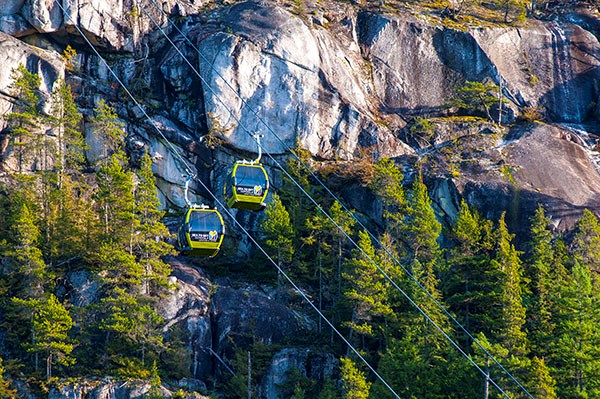Sea to Sky Gondola and Squamish Search and Rescue (SSAR) are working collaboratively on rescue services for visitors to, and near to the gondola.
During the development of the gondola, there were concerns that SSAR would be stretched too thin due to an increase of incidents requiring their service. The thought was that the gondola would draw more visitors and facilitate more backcountry access to an area previously difficult to reach.
John Howe, President of SSAR, said it’s too early to tell if this is the case.
“The interesting thing that we’re seeing is that clearly there’s a significant call volume related to the gondola, but has the call-volume on the Chief gone down the same volume that the gondola has gone up?” he wondered. “There might be just a migration of use.”
Last year, SSAR was the busiest of the 85 such provincially funded, volunteer operated search and rescue programs in the province. They responded to 85 calls. The volume of calls is down this year, but still 20 per cent above the 10-year average. As of August 11, SSAR had responded to 45 calls.
Howe said the Sea to Sky Gondola has been in touch with SSAR from the beginning, and that the groups meet regularly and have a great working relationship.
“We thought someone getting hurt right under the gondola, for example, could be tricky, but we worked it out with their staff – if somebody gets hurt below, we’ll raise them up to the gondola and evacuate them that way,” Howe said. “So instead of having to pack them out, we’ll use the gondola.”
That happened in July and the rescue was carried out in collaboration between the Sea to Sky Gondola and SSAR.
The Sea to Sky Gondola takes responsibility for incidents within their 160-acre tenure around the top terminus. They manage the area like a ski hill, with signage indicating when visitors are heading out of bounds. The gondola employs six patrollers who respond to incidents within the tenure. They also employ more than 25 people trained in
lift rescue.
Trevor Dunn, Sea to Sky Gondola Corporation’s general manager, echoed Howe’s sentiment of a positive relationship.
“Both our organization and SAR have been trying to make the best approach to any emergency. When there’s an incident in the park, we’re often included in the call that goes, and if we can assist, we’re very keen to,” he said, citing a July 5 incident on Sky Pilot where SSAR moved their command post to the top of the gondola and waited two days for the weather to clear.
Part of the approval process for the Sea to Sky Gondola’s tenure on the SLRD land around the top terminus was by a $10,000 donation to SSAR. Howe said those funds are greatly appreciated and will be put toward equipment and training.
Looking ahead, Howe said the two organizations will sit down again in the fall and consider the different challenges posed by winter and ways they can better respond to search and rescue incidents, including the possibility of putting helipads atop Shannon Falls.



